Monday Mar 17, 2025
Monday Mar 17, 2025
Saturday, 9 November 2019 00:52 - - {{hitsCtrl.values.hits}}
- An expedition from Point Dondra to Point Pedro in 24 hours
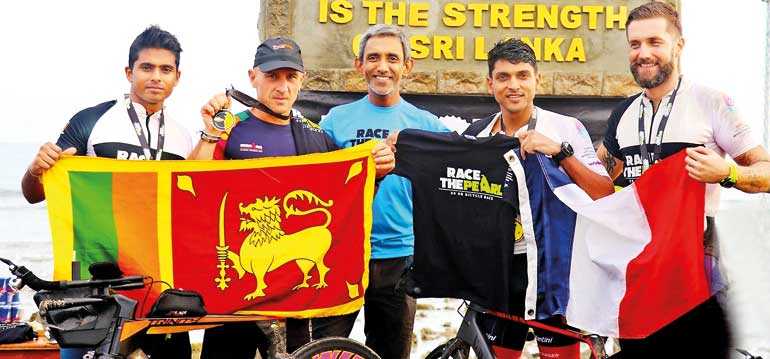
The team that conquered Race the Pearl in 24 hours. From left: Geeth Samarasuriya, Denis Crassier, RTP Organising Partner Yasas Hewage, Mithun Liyanage and Winner of RTP 2019 François Comptdaer
Cycling 600 km across Sri Lanka is no small feat. It is an epic journey that Denis, Mithun, François and Geeth will remember for the rest of their lives. A few months ago, Denis Crassier and Mithun Liyanage – a strong-willed, passionate duo from Triathlon Club Colombo decided to take on a challenge that tested the bounds of human endurance. François Comptdaer and Geeth Samarasuriya later joined the team with the ultimate aim of making it to the north from south on wheels while racing against the clock. On 13 September, the team of four cyclists covered 600km from Point Dondra to Point Pedro – within 24 hours – at an average speed of 37 km/ph – including the time at pit stops. As the first-ever team in Sri Lanka to complete a challenge across the country on cycles within 24 hours, Denis and Mithun invited me over to Endurance Lab – their training facility in Nawala to talk about how they triumphed over fear, fatigue and time to reach the final destination of Race the Pearl
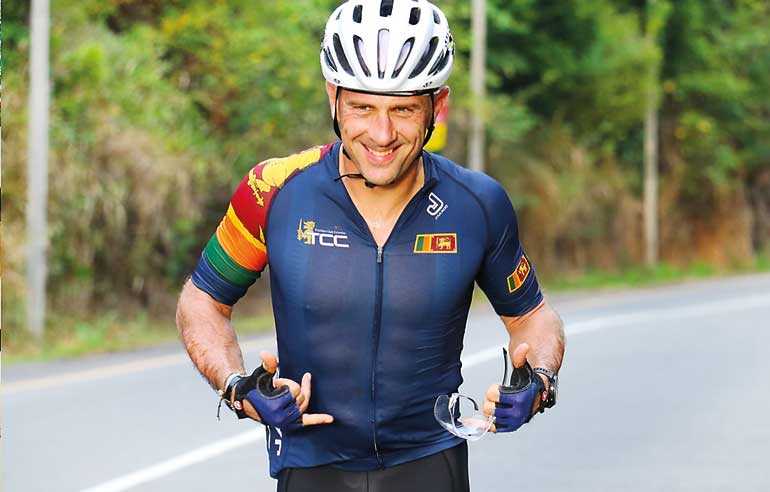
Denis Crassier
By Aysha Maryam Cassim
Mithun: Race the Pearl is a cycling challenge that starts from Point Dondra to Pedro. The route is given and we have the option of taking on the 24 hours or 48 hours challenge. We did it under 24 hours, starting at 6 a.m. from Point Dondra and reaching the furthermost point of Sri Lanka before 6 a.m. on the following day. We had to make sure we planned our logistics to complete the challenge from one end to the other passing through diverse terrains and biking through breathtaking landscapes battling the blazing sun, cold winds and torrential rains during the day and night.
Denis: I came up with a detailed strategic plan two weeks before the challenge. In the road book - I mapped out different stages in the route with distances, breaks, and the ways to pace ourselves according to various elevations. This is a scientific study that I did based on my experiences in the local and international turfs at endurance triathlons. The chart enabled us to check whether we were behind or ahead of the schedule and optimise our performance accordingly.
Q: What challenges did you encounter en route?
Denis: A feat of this nature requires increased levels of mental and physical stamina. We foresaw the potential risks and lags that entailed the challenge. As expected, it was not a smooth ride. We had incidents of flat tyres, breakdowns and episodes of low morale-moments. After spending 10-20 hours on the bike, you become disoriented and sleep deprivation starts taking a toll on you. But we were there to support and encourage each other, always. The ultimate purpose of this race was to start together and end together.
Mithun: At the end of the challenge, we had cycled 618 km because of a few mistakes we made. We failed to take into account the extra four km we had to cycle along the detour to one of our pit stops. You also have to expect the unexpected. As we passed Vavuniya – we faced a swarm of moths coming towards us. The cloud of insects crossed our routes for more than 10 km, hitting us on the face and sneaking into the helmets.
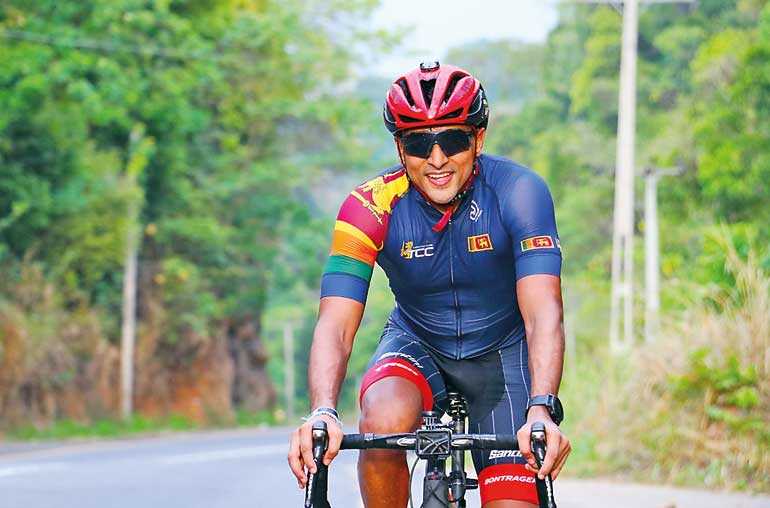
Mithun Liyanage
Q: How did the team condition their mind and body for the challenge?
Mithun: Our training hours were geared towards the challenge. We would meet at Endurance Lab and spend hours in the studio training on our stationary bikes. Two weeks before the event we had rigorous sessions of cycling in three sessions that spanned across 12 hours. Every Saturday morning, we would cycle for three hours and take a break. Starting from eight in the morning, we would go on cycling till midnight, in an attempt to acclimatise our bodies to nocturnal conditions. We also dedicated five to six hours of training on Sundays.
We trained ourselves to have 20 minutes of power naps with the help of music and meditation. During the journey though, we had a hard time trying to have a shut-eye. When you put your body through continuous physical activity, the adrenaline kicks in and your body struggles to hibernate.
Q: What were the dietary requirements for this race?
Denis: The nutrition and hydration plan was extremely important. We had to consistently increase our intake of carbohydrates to maintain our energy levels. The race burnt around 13,000 calories in us – an equivalent to 20 McDonald’s Big Macs. En route, we pulled over at pit stops to refill our bottles and an assistant car was always behind us to supply the food and beverages we needed. We had a cocktail of energy drinks and caffeine gels to keep ourselves awake.
Q: How did you manage to take breaks during this race?
Denis: Every 80 km to 60km-30Km, there were pit stops where we would stop by to take a respite from the ride and rejuvenate ourselves. Our main stops were stationed in Dambulla, Wellawaya and Vavuniya. On the go, we would stop to take a short break and evaluate our progress to plan our journey ahead. The support we received from the official sponsors – Jetwing, Honda and Redbull was amazing. We also had two assistant vehicles with two drivers in each, following and leading us. The first assistance car made sure we were in the right direction and the one behind, carried all the essentials that cyclists needed including spare wheels, bikes, food supplies and water. In Dambulla, another assistant car joined the troop to guide us.
Q: How did you pace yourself throughout different stages?
Mithun: We spent 21 hours on the bike with three hours of resting time. Our average speed was 30km per hour at a 3,000m elevation. The last 100km before the 15 km finish route was a crazy ride. The roads were ridden with potholes. Upon completing 400km, we had to maintain a speed of 37km per hour. As the night fell, François whose watch had died insisted that we maintain 30km. But as he was moving through, he was unaware that he was pushing at a speed of 34-36km per hour and the team followed suit. It was a funny moment. None of the team members wanted to point out that he was wrong and we just went along.
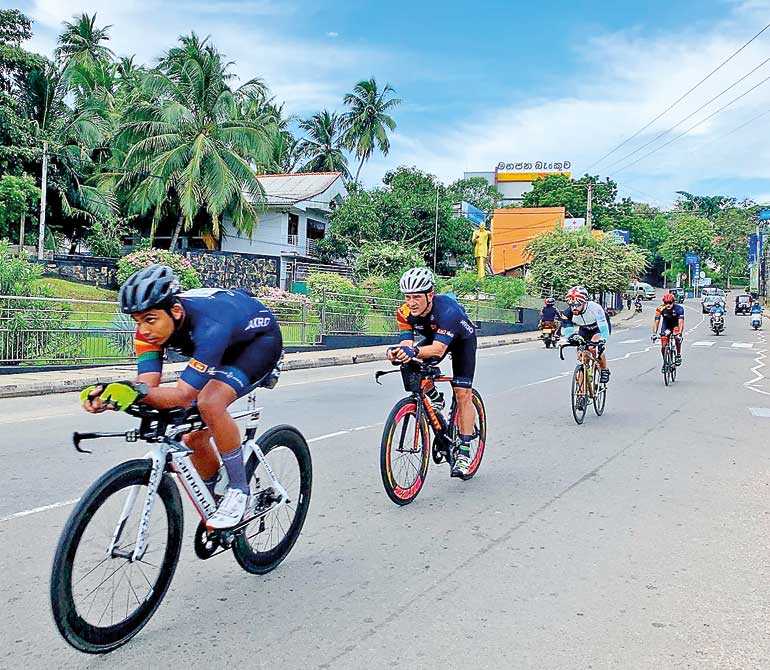
Q: What was the biggest blunder that you made as a team?
Denis: Even though we completed the challenge, we made two mistakes. During the last 15km, the roads were terrible. So we decided to split into two groups to protect our bikes from being damaged due to bad road conditions. Our focus was on the road. Our paths diverged and we couldn’t reach the final destination together.
We almost thought we lost but then we won. The second mistake we made cost us a lot of time. We ended up taking the wrong U-turn to the wrong finish line. After 20 hours of cycling, we started to lose our clarity and sanity. This is quite common in endurance sports. At the last 800m, we realised that we had cycled extra two km towards Point Pedro Lighthouse instead of approaching the final view point – where we were supposed to end the challenge.
Meanwhile, François and Geeth had taken the right turn and they were under the impression that we had completed the challenge. The moment we reached the finish line, we checked out our stopwatch – it was 24 hours 00.32 seconds. We looked at each other with dismay – the thought of losing the challenge by 32 seconds shattered us. The pain was evident from our faces. I waded into the ocean to let my sorrows sink.
A few seconds later, Yasas – the organising partner for Race the Pearl – broke the news to us that we had seven minutes as bonus due to the exchange we made in Dambulla elephant crossing. In Bakamoona – they had a lorry ready for us to load and unload the bikes to avoid a dangerous path. Since our average speed dropped during this process, the seven-minute delay was added as a bonus to our journey. We were overjoyed upon hearing that we finally made it! It was a thrilling end, filled with mixed feelings. A moment of silence turned into celebrations within a few seconds.
Q: How did Race the Pearl change your life and the camaraderie you shared with the team?
Denis: The race changed the bond I shared with my friend, Mithun. The day we completed the challenge together, conquering all the obstacles is one of my best souvenirs. The blue jersey I won, will remain as the most treasured possession in my life.
Mithun: It was a journey that saw highs and lows. Every hour was a different experience. The best feeling was opening up WhatsApp to receive a staggering amount of messages from our club. The response was overwhelming. We got to know that our friends and families were supporting us throughout the race, keeping track of our live locations and sending us their wishes, prayers and positive vibes. There were people who documented our entire journey on the road, sharing snippets of the adventures and misadventures we encountered.
Q: Indeed, team effort and courage are not enough without leadership. Denis, as the captain, how did you motivate the team to push through the challenge?
Denis: The last 200km was the hardest for me. As a finance guy, I am naturally inclined to make calculations in my mind. When I noticed that we were 30 minutes behind schedule, I found myself nervously thinking whether we can make it on time or not. But as the captain, I did not want to let anyone down by expressing my feelings out. I encouraged everyone to push through. We made sure we left no one behind. When Geeth had a breakdown at the last 200km, Mithun made a sacrifice by giving his wheel to him and he took a climbing bike instead. Geeth was on the verge of giving up and then we convinced him to pull it through. We came up with a drafting technique that enabled the three of us to exert our energy efficiently into the race. Within 20 minutes, each one of us had to push five minutes, powered on to take the lead. This way the cyclists behind had the advantage of reducing the wind resistance and the amount of energy required to pedal.
We knew things could go wrong in this race. We still wish we could have crossed the finish line together if we had not made the wrong turn. As I reflect on the race, I marvel at the mental strength we all had to make it to the end. Good things happened along the way. As we cycled our way across winding roads, we saw the beauty of Sri Lanka on a bike from one end to the other. We met people who were smiling at cheering at us. This kept us going. Race the Pearl had people from different countries, religions and generations competing against the clock, as one team, towards one goal. We completed the challenge at Point Pedro, right at the monument that bears the Sri Lankan flag along with the words ‘Unity & Diversity is the Strength of Sri Lanka’. We couldn’t have asked for a better end that reflected the essence of our journey.
Mithun: We are determined to finish the Race the Pearl challenge in 23 hours next year. You can’t put a limit on anything.
Having won the Race the Pearl 2019, the team has set their aspirations high for 2020. They hope to inspire more individuals, both young and old, men and women to be a part of this expedition.
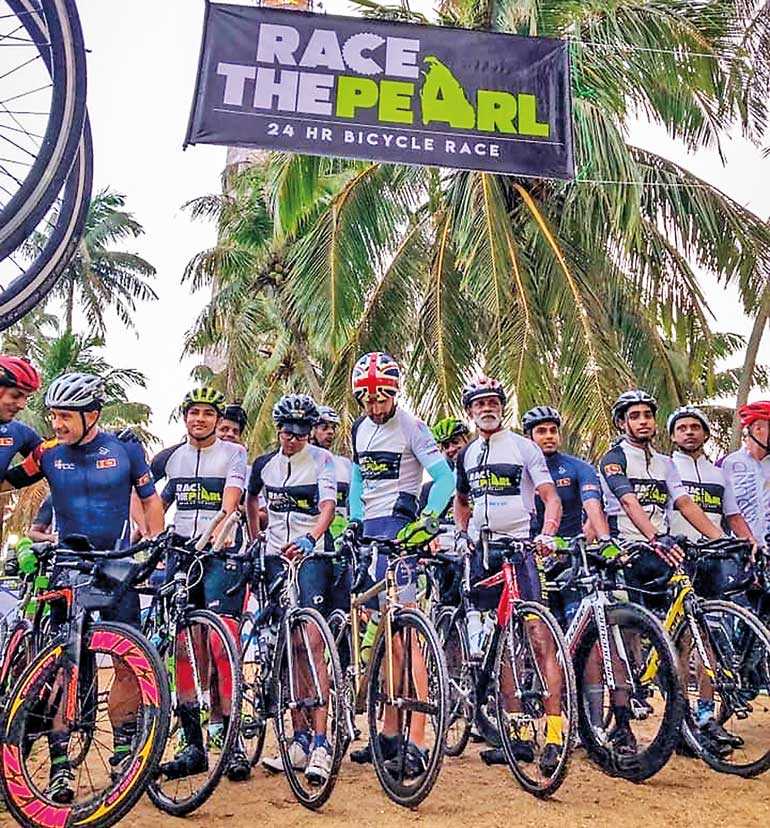
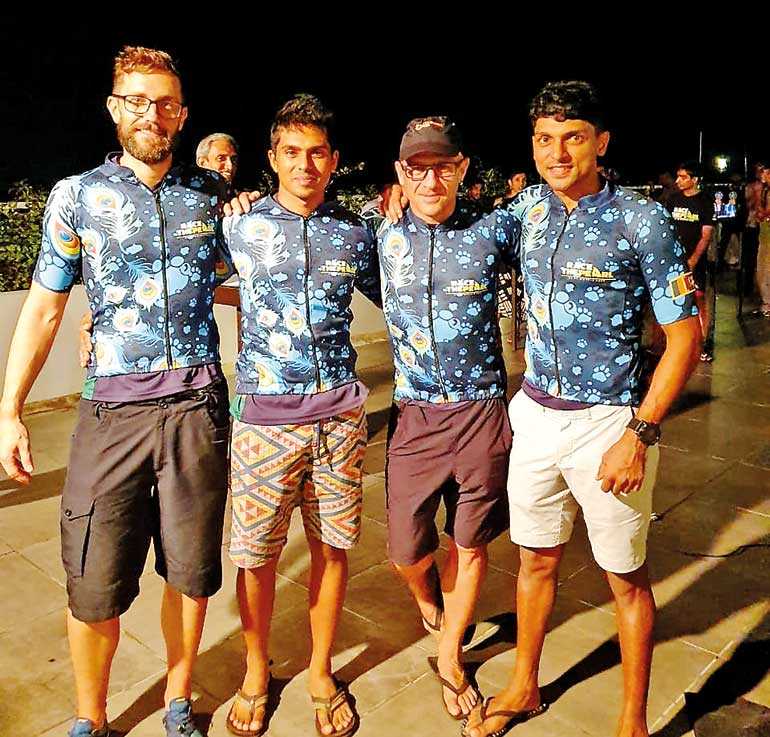
Discover Kapruka, the leading online shopping platform in Sri Lanka, where you can conveniently send Gifts and Flowers to your loved ones for any event including Valentine ’s Day. Explore a wide range of popular Shopping Categories on Kapruka, including Toys, Groceries, Electronics, Birthday Cakes, Fruits, Chocolates, Flower Bouquets, Clothing, Watches, Lingerie, Gift Sets and Jewellery. Also if you’re interested in selling with Kapruka, Partner Central by Kapruka is the best solution to start with. Moreover, through Kapruka Global Shop, you can also enjoy the convenience of purchasing products from renowned platforms like Amazon and eBay and have them delivered to Sri Lanka.
Discover Kapruka, the leading online shopping platform in Sri Lanka, where you can conveniently send Gifts and Flowers to your loved ones for any event including Valentine ’s Day. Explore a wide range of popular Shopping Categories on Kapruka, including Toys, Groceries, Electronics, Birthday Cakes, Fruits, Chocolates, Flower Bouquets, Clothing, Watches, Lingerie, Gift Sets and Jewellery. Also if you’re interested in selling with Kapruka, Partner Central by Kapruka is the best solution to start with. Moreover, through Kapruka Global Shop, you can also enjoy the convenience of purchasing products from renowned platforms like Amazon and eBay and have them delivered to Sri Lanka.